Debra L. Martin's Blog, page 306
May 8, 2012
Interview with S.B. Knight
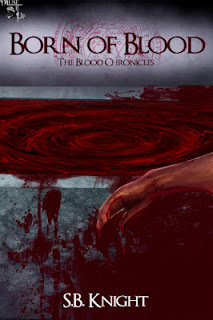
Briefly describe your journey in writing your first
or latest book.
My first book is buried at the bottom of a
bookshelf in my office. A few have seen it but there it will stay. My debut
novel, Born of Blood, was a blast to
write but a wall of negative feedback almost derailed its journey to
publication. After some soul searching, I pushed through my edits and submitted
it to publishers. The rest, as they say, is history.
Did you query agents and traditional publishers? How long before you got your offer of
representation/your first contract?
I submitted my first novel to a number of
publishers and agents. As you can guess, I received rejections from all of
them. To be honest, I deserved to be rejected. I submitted Born of Blood to three publishers and all three requested full
manuscripts. Two of the three offered me a contract.
What factors influenced your decision to go with a
particular agent or publisher?
I first met Lea Schizas a few years ago during
her annual online writing conference. Shortly after she started MuseItUp
Publishing and made a massive splash by winning a number of awards during the
first year. I knew of her hard work, dedication, and passion for writing and
authors. This is what influenced me to sign with MuseItUp. Once there I saw
firsthand Lea’s drive and desire to succeed as a publisher. This matches
perfectly with my desire and drive to succeed as an author.
Are you currently under a traditional publishing
contract for future books or do you have manuscripts that you will publish
directly for Kindle?
Yes, Born
of Blood and the sequel are under contract with MuseItUp. I have submitted
a third novel of which I am waiting to hear back on. Since MuseItUp is a small
publisher they release all books as eBooks first. Many are later published in
paperback depending on eBook sales.
If you used a graphic designer/publisher’s designer,
how involved were you during the creative process for your cover?
I believe I was very involved in the process.
The process started when I completed a form outlining my vision and thoughts
for the cover. Once the cover artist started on my cover I was in regular
contact with updates. I also provided feedback after the first draft was
completed. Granted the final decision belongs to the cover artist but my
opinions were included and accounted for.
[image error]
What kinds of social media [twitter, facebook,
webpage, blog, writing forums] are you involved with trying to garner publicity
for your book(s)?
I started a blog, The New Author, five years
ago while researching and learning the craft of writing; soon after I joined
Twitter (@thenewauthor) and Facebook. I am also on Goodreads. Once I signed my
contract I developed my website (www.sb-knight.com) and
Facebook Fanpage. Basically I started building my author platform five years
ago with my blog and continued from there.
Besides Amazon, are there any other sites where your
books are for sale?
Born
of Blood is available on Amazon,
Amazon.co.uk,
Bookstrand.com,
and the MuseItUp
Bookstore. It is scheduled to be added to other
stores in the near future.
What is the best advice you can offer new authors?
Make goals, have a direction, and drive hard
toward them. When you are presented with an obstacle push through it but make
sure you stay true to who you are as a writer.
What’s next for you?
I have the pleasure of working with some of
the best editors in the business as I start the editing process on the sequel
to Born of Blood. I can’t wait to get going. After that I will be working on
the cover and hopefully signing a contract for my third novel. I plan to start
writing my fourth this fall. I know, that is a long time away but I have enough
to keep me busy until then. Trust me, I’ll be more than ready to get to it by
that time.
Do you find it difficult to
juggle your time between marketing your current book and writing your next
book?
I worked very hard to get two more novels
under my belt before the heavy promoting for Born of Blood started. I have one
and waiting to hear about the other. That eases the pressure a little as I get
my feet under me. It is still difficult which makes time management critical.
To add to the schedule I am one of those with a full time job too. The magic
two words to remember here…time management!

Published on May 08, 2012 05:00
May 7, 2012
Review: SILENCED BY THE YAMS by Karen Cantwell
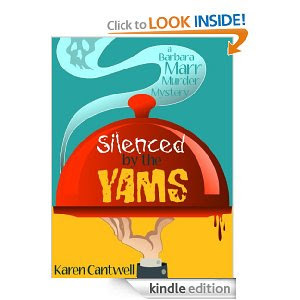
 5 of 5 stars
5 of 5 starsThis is the third title in the Barbara Marr mystery series and it's the best one yet. With so many laugh-out-loud scenes, it's hard to put the book down. In this story, we find Barbara happily reunited with her husband, Howard, the FBI agent. Life is settling down and getting back to normal or so she thinks. When Barbara is invited to a local movie screening, she's thrilled, that is, until the film director Kurt Baugh keels over and dies right in front of her after eating the yams. It's bad enough that the director is dead, but it's her ex-mafia friend Frankie, who catered the event and he is now the #1 suspect. Never one to leave things alone when she should, Barbara feels it's up to her to follow the clues that could possibly exonerate Frankie.
Ms. Cantwell has a definite flair for comedic writing and this book is pure entertainment. She brings back characters from previous stories as well as introduces a few new ones including Mama Marr--Howard's mother to the mix. The laughs keep coming especially whenever Barbara and Howard try to have an intimate moment together.
There are so many good things to say about this book, but I don't want to spoil anything. If you want to enjoy the full flavor of the Barbara Marr mysteries, start with book 1, "Take the Monkeys and Run." I have thoroughly enjoyed every one of them, and I highly recommend them. It's the perfect way to wile away an afternoon.

Published on May 07, 2012 05:00
May 4, 2012
Guest Post: WHAT WILL BECOME OF THE BOOK?
By Charles
Rosenberg
Author of Death on a High Floor
In April, I attended both the IBPA "Publishing
University" in San Francisco and the 2012 Left Coast Crime mystery fan
conference in Sacramento. In both places, I heard many people ask, in one
way or another, "What will become of the book?" They were talking
about the book as print on paper.
That question contains within it both an assumption and a
lament. The assumption is that we have, up until now, all shared a
common understanding of what is meant by the word "book."
The implied lament in the question is the emotional equivalent of asking: What
will become of Grandma now that we've left her by the side of the road and
driven away?"
In this blog post, I want to explore both the
rapidly changing meaning of "book" and the feeling of lament
about those changes.
What Is a "Book," Exactly?
In the long-ago year of 2006, before the first Kindle was
released, we had, I think, a culture-wide understanding of what the
English word "book" meant when applied to a physical object. It meant text
or pictures on sheets of paper, the sheets bound together at one end,
called the spine (usually stitched or glued, but sometimes bound
in other ways), with a protective cover made of thicker paper,
cardboard or some other material stronger than the sheets of paper
within. There were indeed many subcategories of books -- hardback books,
paperback books, art books, comic books, graphical books, notebooks, workbooks,
etc., etc. -- but, one way or another, all *books. So if you said to
someone in 2005, "I just read a great book," most people wouldn't have
bothered to ask what physical form the book took.
That was then.
Now, with the advent of the Kindle, the Nook, the iPad, the
iPhone, and numerous other smart phones and tablets, the term "e-book"
has arisen, which has begun to upend our more than one thousand
year-old understanding of what the word "book" means in physical
terms. Think about it: e-books are not made of paper and do not
contain pages that are physically bound together with stitches or glue. If
they have a cover, its function is not to use thicker/better/stronger
digits to protect the text on the inside. Its function is
more-or-less to announce the book. Kind of like a butler. Indeed, an e-book
is not a physical object at all, although it is contained within one.
Yet I don't think many people would think of a Kindle or an iPad as a book.
As a result, the meaning of the word book has begun to change, to
mean text and/or images of a certain length and format rather than a physical
object. You can figure this out just by listening to people talk. You
will not usually hear someone say: "I just read a great e-book."
For an increasing number of people, whether a text was read in
digital form or on paper has become a matter of indifference, and yet they
still refer to having read a "book." Of course, someone
listening to the statement may enquire if the book is available as an e-book. But
the question may be generated as much by their "platform"
reading preference or on their assumption that the e-book will be less
expensive as by any desire to know how the reader accessed the book.
Is This Really Anything New?
From what I've read, change is nothing new for books.
Starting around 400 A.D., the bound book became dominant, at least
in the West, over the scroll, which has receded into mainly ceremonial use
(e.g., the Torah). The bound book had large advantages over the scroll: It was
less expensive (you could write on both sides of the page), it was more easily
stored and transported (try stacking scrolls), it had what we would today call
"random access" (you could reach any page without unrolling), and it
was harder to damage (covers really do protect). It was also easier to
hide. This was apparently important to early Christian groups, who favored
the book over the scroll.
Although we easily recognize books from the Middle Ages and
before as books, we would not find them very friendly to use. They were
generally large, heavy and extremely expensive. The expense came from
the reproduction technology (hand copying), the material used (mostly
parchment, which was hundreds of times more expensive than paper -- not yet
invented -- is today), and transportation costs.
Change came. The printing press, introduced in Europe in the
mid-15th Century, was the biggest change, although early printed books
were still expensive and something of a luxury item for the well-off. http://en.wikipedia.org/wiki/Printing_press. Eventually, ever
faster printing presses and ever cheaper paper production technologies produced
what we have today -- cheap hardbacks and even cheaper paperbacks. What
paperbacks did, of course, was to make books not only cheaper, but smaller and
lighter. (There is a very interesting history of the paperback book here: http://paperbarn.www1.50megs.com/Paperbacks/msg1.htm ).
The ubiquity of the book in our culture was furthered by much
cheaper transportation (railroads and trucking), more widespread
distribution, the price reduction that having a larger sales base makes
possible (that's in part what Barnes and Noble, Borders and Wal-Mart were
all about) and the near-universal literacy needed to create that base.
More recently, high speed ink-jet presses have made paper books
available as print on demand (POD), which has permitted authors and publishers
to make a profit on books that sell in relatively small numbers.
Change has thus been integral to books for centuries. So while on
one level the printed book that we have today is the same as a hand-copied
book made 1,600 years ago (they're both bound at the spine), the two are
in other ways quite different. To see this in more detail, take a look at
this good overall history of the book: http://communication.ucsd.edu/bjones/Books/booktext.html
The Book Unbound
One way to think about the latest form of the book – the e-book --
is that it is is just one more incremental step in the evolution of the
book: less expensive to make than paperback books (probably by the same
order of magnitude as paper vs. parchment and hand-copying v. high speed ink
jet presses), even more portable than a paperback, in many ways more durable,
and with a cheaper sale price, thus attracting an even wider audience.
Another and perhaps more interesting way to think about the change
is this: the book is now unbound, both literally and metaphorically. What
does it mean for the book to be unbound? It means that each of the
elements that previously made up a book have been set free to pursue their own
ends. Let's break it apart:
Covers
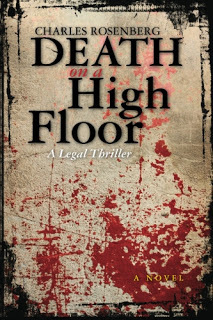
Covers have from the beginning had a utilitarian function
-- to protect the inside pages of the book. They eventually evolved to
have an art-driven sales function, too: please pick me up. The art-sales
function did not arrive immediately. For example, I have learned that
"dust jackets" for hard covers were originally wrapped entirely
around silk-bound books to protect the silk from dust and damage. Decoration
and sales appeal was minimal. Here's a picture of one of the earliest, from
1830:
http://www.guardian.co.uk/books/2009/apr/24/earliest-dust-jacket-library
For e-books, the utilitarian protective function is simply gone. There
is nothing to protect and nothing to pick up, only an image to click on. And
sure, there is still some art-sales appeal in the cover thumbnail. But to be
candid, I have never seen a one or two-inch thumbnail that knocked my socks
off.
This suggests to me that the cover is going to go off on its own
and try to use the inherent power of digital media to enhance its sales
function in ways that can't be accomplished with a simple digital copy of a
larger painting.
If you look at so-called book "trailers" you can see the
beginning of this, even though most of the current ones are dreadful and a
waste of time. Eventually, and particularly as broadband grows cheaper and
e-reading platforms grow ever more powerful, the unbound cover is likely to
reinvent itself in the same way that the dust cover did. Will it
dance and sing? If it works to sell books, sure.
Internal Pages
The internal pages of a book, when bound together at the spine,
were condemned to a set order. Page 200 would always be after page 2, and pages
3 to 199 would always be in between. Without a binding that physical
limitation no longer exists.
That means, as only one example, that "pages" can be
intruded which are not part of the order of the text. A simple example is the
ability to intrude the page of a dictionary into your reading by, for example,
touching the word (possible in an iPad, the Kindle Touch and the Kindle Fire,
among many other devices). A more elaborate example is the ability to
"go outside the binding" and look at graphics or moving images stored
somewhere else.
This unbinding of the internal pages of a book will eventually
free up authors to create new kinds of works, where "outside"
pages (meaning not in textual order) are more smoothly and seamlessly
integrated, artistically, into the book. In the paragraphs above, I attempted
that in a minor way by putting in links to some web sources. That's still very
clunky, though. You need to go out to the Web to link to them, and then
you need to come back. Eventually, though, there will be enough computing
power and storage in e-platforms so that an author will be able to embed
in books things an author wants the reader to see, do or experience. Nor do
those things need to go in chronological order. Want to see the character's
back story right now? Go ahead. Want to see it later or never? OK.
Want to follow a minor character down a side path? No problem. Don’t care about
that character? Go ahead and skip him/her.
Both the novel and non-fiction books await that transition. Who
will be the authors of those new works? Most likely the two-year olds who are
today sliding their fingers around iPads, or the teenagers with their heads
buried in video games.
Size
Books are likely to get shorter, particularly non-fiction books.
I've had the experience many times of reading a non-fiction book that
was two hundred fifty pages long and thinking, "You know, there
was only fifty pages worth of information in that book." I have
always assumed that publishers felt they had to encourage authors to make non-fiction
books long in order to justify the price of $29.95 or whatever because so much
of the price was related to paper, printing, shipping and returns, and a lower
price wouldn’t cover those costs. With those costs mostly gone in the e-format,
non-fiction books can be shorter but still make a profit at a much lower sales
price.
Fiction may get shorter, too, as the short story and the
novella enjoy a renaissance. Until the advent of e-books, a single
short story or novella was simply not economical to publish. Short stories and
novellas had to come in collections. Now, with the price of paper, printing,
delivery and returns eliminated, a single short story or novella can easily
make a profit at price you’d never see in a print book.
Outside Things
Right now, there are many things connected to books that are not
in the books themselves. One example is reviews. While you can see reviews and
reader comments in separate "places," be those places physical (paper
newspapers) or e-places (Amazon, B&N or Goodreads reader reviews, for example),
they are not really integrated into the books themselves, except in minor ways.
For example publishers have for many years placed review fragments
"on" books -- for example on dust jackets, either on the back cover
or on the flyleaves.
There is no reason reviews can't be more fully integrated. Would
it be fun to see a favorite reviewer's take on a particular chapter? Maybe. Some people would hate it. Others
would like the interaction. Would you like to see what your Uncle Jack or your
Aunt Betty thought of the book? That, too, can be accomplished.
Amazon has begun to do those types of things in a limited way with
the Kindle. For example, a reader can highlight passages in an e-book and, if
the reader wants, permit others readers to see the lines highlighted. These are
then gathered up and placed at the bottom of the book's page with an indication
of how many people highlighted them.
Interactivity of this nature, with both professional reviewers and
readers, is likely to continue.
The Lament
There are many people who like their (paper) books just as they
are. I sense that there are enough of them -- people who love a book
in the hand -- that paper books will be around for many years to
come. And yet . . . I would expect that paper books, too, are going to change.
As only one example, print robots (such as Paige M. Gutenborg) can now print
books on demand in bookstores. http://www.harvard.com/clubs_services/books_on_demand/. As another
example, thin, flexible electronic "paper" is being developed that
can have both print and touch features on the same thin, bendable page. Later
versions of these might even be bound into some form of physical book. http://www.engadget.com/2012/03/29/lg-flexible-e-paper-display-launch/
So I think the lament for the book is premature. It will not be
left by the side of the road. Whether on paper or in e-form, it is just going
to duck into a virtual phone booth, change clothes and emerge reinvigorated and
more widely read than ever.
Author Bio:
Charles (“Chuck”) Rosenberg is a
Harvard-trained lawyer practicing in Los Angeles. He describes his career as
either eclectic or unfocused, depending on to whom you talk. He’s been a
partner in a large, international law firm and, simultaneously, an adjunct law
professor who has taught courses from copyright to criminal procedure. He’s been
the credited legal script consultant to TV’s The Paper Chase, L.A Law,
The Practice and Boston Legal, a full-time on-air legal analyst for E! Television’s O. J. Simpson criminal and civil trial
coverage and a board member of the Taos Film Festival. Death on a High Floor is his first novel.
Website and Blog: http://www.deathonahighfloor.com/
Most recent review (by Professor
Laurie Levenson of Loyola Law School; originally ran in the Los Angeles Daily
Journal): http://llsblog.lls.edu/faculty/2012/04/prof-levenson-reviews-death-on-a-high-floor.html

Published on May 04, 2012 05:00
May 3, 2012
Interview with Kersten L Kelly
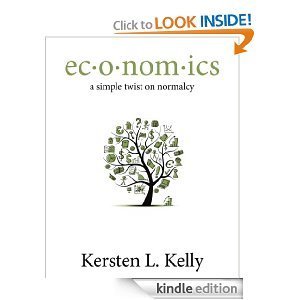
Can you give us a brief overview of your latest book?
The book is entitled ec·o·nom·ics: a simple twist on normalcy.
It is a narrative non-fiction compiling economic theory, pop culture, business,
history, and social trends into digestible and enjoyable snippets of
information. Professional football players,
corporate tobacco advertisers, volatile gasoline prices, and the Cold War
all share an undetected commonality—each is an intrinsic part of economics.
Though not obvious to the naked eye, each entity shares a pattern with the
others. This book helps to shed light on these mutual characteristics. It is an
extensive compilation of theories interpreted using supportive examples. Economics is part of daily life, and this
book challenges readers to question how and why people make decisions by adding
a simple twist on normalcy.
Did you try the traditional route to publishing, i.e.
querying agents/publishers?
No, I didn't try the
traditional route to publishing. I've always been an ambitious person, and I
wanted the experience to input every part of the book myself. Although it was
quite a challenge, I'm glad I self-published my book. I feel rewarded knowing
how much time and effort I put forth to create the finished product.
Do you belong to a critique group? Have they helped
improve your writing?
The critiques that I
received for the book were directly from my editor and my colleagues that work
in the publishing industry. My writing greatly improved through their suggestions,
edits, and advice. It is always helpful to get a different perspective on your
own written work. Each person that worked on the critiquing process added value
and a unique outlook that I would never have thought of myself. I cannot thank
them for their invaluable input.
What factors influenced your decision to self-publish
to Amazon?
I decided to self-publish to
Amazon for a number of reasons. First, I wanted to make sure my finished
product was readily available for readers and Amazon gave me that piece of
mind. I also know that online mediums to purchase books are rapidly growing
compared to brick and mortar stores. If you want to be successful, an author
needs to follow the industry standard. I did this by publishing on Amazon.
Did you hire an editor to review your manuscript
before publishing?
Yes, it is critical to have
a professional editor take a look at your work before you publish a manuscript.
Not only did my editor find mistakes, but she also helped me to reword some of
the sentences that were hard to understand. This was probably the most valuable
piece of feedback I've gotten thus far.
What have you learned during your self-publishing
journey?
Aside from the actual
process itself (i.e. editing, designing, proof-reading), I've learned how
important it is to at least attempt self-publishing. I had no idea at the
beginning of this journey how difficult it would, but the reward of being able
to see my book in print is euphoric. Not only do I get to be proud of the words
on each page, but the book in its entirety. I am elated to be directly involved
in the entire process.
Besides Amazon, are there any other sites where your
books are for sale?
Yes, my book is listed on
BarnesandNoble.com, Smashwords.com, and the CreateSpace.com, and it will soon
be on Apple's iBook website.
What kinds of marketing [twitter, facebook, blog,
forums] are you involved with for promoting your book(s)?
The social media marketing I
am using is on Twitter (@KerstenLKelly), Facebook (Author Kersten L. Kelly),
AuthorsDen.com, Book Blog (theeconomicsbook.com/blog), press releases on a
variety of websites, the book website (www.theeconomicsbook.com), and exposure
through BookBlogs.com.
Do you find it difficult to juggle your time between
marketing your current book and writing your next book?
Yes, this has been extremely
difficult. My next book has actually been on hold for the entire month of March
because of the launch of this book. The amount of time spent marketing the book
has far exceeded my expectations. I am dedicated to selling my book though so I
am enjoying the process.
What advice would you give a new author just entering
into the self-publishing arena?
Stay focused.
Read as many "how
to's" as you can. You are guaranteed to learn at least one thing from
each.
Don't let small issues
frustrate you. I can promise there will be a lot of them.
Find a great designer. I
did, and she was well worth it. Remember, the cover of your book is the only
true selling piece.
Edit, edit, and edit again.
Don't ever think you've found every error. The book can always be improved.
Get in touch with a
self-published author and ask for their 5 "best practices." I did,
and this was one of the most helpful pieces of information I received in the
process.
What’s next for you?
I have started writing my
next piece. At the same time, I started a resume reviewing business to help
people earn their dream jobs. I hope to have my next piece completely written
by the end of the year.

Published on May 03, 2012 05:00
May 2, 2012
Guest Post: WRITING IN THE FIRST PERSON by J Bennett
Arguing With Myself And Other Quirks Of Writing In
First Person
By J Bennett
Thank you to Deb for hosting me on Two Ends of the Pen and
for supporting so many talented authors. As a reader, I’ve always loved books written in first person
and wondered what it was like for an author to write an entire novel in the
voice of someone else. Well, I got to find out when I wrote my debut novel,
Falling – Girl with Broken Wings.
***
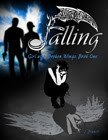
Maya and I
don’t always get along. She can be stubborn and reticent to follow directions.
This can get frustrating, especially because I’m the one who’s supposed to be
calling the shots.
Of course,
Maya and I don’t face the same challenges. A bad day for Maya involves being
kidnapped by a stranger, turned into something other than human and rescued by
two vigilante half-brothers she never knew she had. A bad day for me, on the
other hand, might be a flat tire or finding out that my local grocery store has
run out of my brand of orange juice.
Maya, if
you haven’t guessed, is a character in my debut paranormal novel, Falling – Girl With Broken Wings. The
story unfolds through her perspective, and finding her voice has been both a
thrill and challenge for me as a writer.
When I
started writing Falling, I knew it
was going to be in first person. Maya didn’t give me much of a choice. She was
already awake inside my mind, whispering her story – the kidnapping, the
change, the new abilities she develops and the terrible hunger that fuels
them.
It’s
difficult to explain the process of slipping beneath the skin of another –
especially someone who doesn’t actually exist. Maya and I have a lot in common,
(as they say, write what you know), but I’ve also imbued her with lots of
different traits of others I’ve known in my life. The amazing and wonderful thing is, the more I write in her
voice, the stronger Maya becomes.
First
person does present some challenges, however. Looking through the eyes of a
single character limits the story to their experiences and colors everything
with their biases. For example, Maya and I argue a lot when it comes to her
eldest brother Tarren.
To say
that Maya and Tarren have a complicated relationship is quite the
understatement. The first time they meet, Tarren actually tries to kill her. Maya is swiftly turning into an angel
(not a good thing), and Tarren believes he must kill her before she becomes too
strong. His reasoning is understandable, at least to me. I know how he is driven by a fierce need to protect his younger
brother, Gabe, who is much more trusting and naïve about the danger Maya
presents.
Maya, on
the other hand, isn’t about to forgive Tarren or see beyond his cold exterior…at
least until, well, you’ll have to read the book. As an author, it was definitely
a challenge to show Tarren’s true nature when Maya was dead-set against giving
him even an inch.
Even
beyond Tarren, Maya and I have regular squabbles. In the end, however, she and
I are partners, and I couldn’t imagine telling this story without her.
Falling is J Bennett’s debut novel and the first book
in the Girl With Broken Wings series. It is currently available as an ebook for
$2.99 on Amazon , Barnes & Noble and Smashwords . Read a free
sample at www.GirlWithBrokenWings.com .
J Bennett is a professional copywriter and copyeditor. She also writes the blog
www.ShyWriter.com

Published on May 02, 2012 05:00
May 1, 2012
Interview with Valerie Gillen
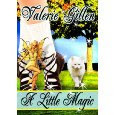
Can you give us a brief overview of your latest book?
It’s called A Little Magic. Siobhan Kelly is a California girl who comes to
Vermont when the grandmother she’s never met falls into a mysterious
coma. Alicia, a local girl dabbling in dark magic, tells Siobhan that her
grandmother was a witch, and is demanding that Siobhan help her do a
powerful dark spell – or else. Siobhan’s own powers manifest with a
vengeance and suddenly there are fairies in the back woods, claiming that Gran
has stolen the sacred Jewel that is the font of their magic. Siobhan must
help them get it back – or else. But when her mother warns her that magic
is evil and to stay away from it, Siobhan is at a crossroads. She has
promised the fairies to help get their Jewel back, in return for their aid in
lifting the curse that has caused her grandmother’s coma. Somehow, she has to
find Gran’s spell book, wake her up, avoid Alicia and her evil schemes, and
save the world of Fairie. So, no pressure.
Did you try the traditional route to publishing, i.e. querying
agents/publishers?
I did, but I just got sick of
submitting to agents and traditional publishers, hoping to even get a response
from somebody, hearing stuff like, well the market is very competitive right
now, this had more fantasy than I'm interested in, etc. etc.
Do you belong to a critique group? Have they helped improve your
writing?
It’s not a formal critique group, but
I have a few good writing friends and we run our new stuff by each other, just
for a second set of eyes, and helpful comments.
What factors influenced your decision to self-publish to Amazon?
My friend, Jeanne Miller, who’s a pet
psychic, has a successful book on Kindle, and she was a big help to me in
navigating those waters and getting my book up there. I'd rather have my
book out there, hopefully to be read and enjoyed by people, than sitting in a
drawer gathering dust
Did you hire an editor to review your manuscript before
publishing?
No – but I did have the above-mentioned
writing friends look it over for content, continuity and grammar.
What have you learned during your self-publishing journey?
It’s been an interesting one!
There’s a lot of friendly, helpful people out there who are glad to help and
have your best interests at heart. As well, there are people who will
take advantage of your situation, so you have to be careful. I’m very
fascinated by the exponential growth of E-books and feel that this is more and
more, a viable place for those who want to publish their own books and connect
directly to the reader.
Besides Amazon, are there any other sites where your books are
for sale?
Yes, they are also available on
Smashwords, Shelfari and Barnes and Noble.
What kinds of marketing [twitter, facebook, blog, forums] are
you involved with for promoting your book(s)?
I’ve done guest posts on blogs,
twitter, done giveaways on Library Thing and Goodreads, approached some local
newspapers, and I’m being interviewed for the Authors Show, which will be up
shortly on http://www.TheAuthorsShow.com
Do you find it difficult to juggle your time between marketing
your current book and writing your next book?
I think it can be. You want to
work on that next book and get that out there, which in turn will get your name
out there and give people more options to buy your books, but on the other
hand, you want to market your current works to get them in front of the
biggest amount of potential buyers possible.
10. What advice would you give a
new author just entering into the self-publishing arena?
The Writer’s Café on Kindle Boards is
a great place to go for help and advice. There are so many people on
there that have been through it and can help you with different issues.
If you want to self-publish, either have the book edited or have some friends
you can trust to give you an honest opinion. You want your best work out
there, not only in content, but basic stuff like spelling and grammar.
You don’t want anything to throw people out of the magic of reading your story.
What’s next for you?
The YA book I’m working on now is
called Everything to Live For and is
also in the paranormal realm. It's about a girl who suffers a great loss,
and really doesn't see the point of going on with things. She's getting
into trouble and failing out of school, when she comes into possession of a
brooch that belonged to one of her ancestors, who was hung as a witch in 1700s
Connecticut … And then the adventure begins. A young woman on my
family tree was actually hung as a witch in the 1700s, so that’s where the idea
for this one started.

Published on May 01, 2012 05:00
April 30, 2012
Review: THE FALLEN by Mark Terry
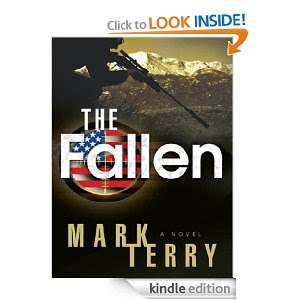
 4 of 5 stars
4 of 5 starsWhat better location to plan a terrorist attack than a G8 Summit were all the world leaders and their staffers are attending the summit at the Cheyenne Resort in Colorado Springs? This is exactly what Richard Coffee of The Fallen Angels is planning to do and it's up to agent Derek Stillwater to stop them.
The story follows Derek who has been undercover at the resort posing as a maintenance man as he tries to stop the terrorists. Their plot is sophisticated and extensive and appears to be infallible, but they did not take into account that Derek was on the site. He manages to pick off one terrorist at a time, but not without a number of attacks against him. He gets shot, stabbed, punched, falls down elevator shafts, and yet, he carries on with the mission to stop this attack. The action is non-stop in this heart-pounding political thriller. The secondary characters, especially Maria, are well-fleshed out. I loved that Maria was a strong, savvy woman who didn't cower in the corner when the terrorists attack.
While I had to suspend belief that any one man could sustain so many injuries and still carry on, I thoroughly enjoyed this story. After all, how many times did James Bond get in tough spots and yet managed to save the world? The author gives us snippets of Derek's life, enough to make me read the other Derek Stillwater novels, and that's the highest praise for any author. Fans of political thrillers will certainly enjoy this.

Published on April 30, 2012 05:00
April 29, 2012
Spotlight: REPLENISH by Philip Bullman

Book Blurb:
In February of the year 303, the Roman emperor Diocletian issued the first in a series of edicts designed to destroy Christianity. Striking at the heart of the church, the measure banned Christian worship and ordered the Roman legions to destroy churches and scriptures. This novel opens on the day the first edict was issued. It follows Linus and Priscilla, two members of a small Christian community, through what church historians would later come to call the Great Persecution. Replenish The Earth is a thriller that takes you into the heart of a Christian community and its heroic resistance to persecution.
Buy links:
Amazon US: http://www.amazon.com/dp/B0056KOKA0/ref=twoen-20
Amazon UK: http://www.amazon.co.uk/Replenish-The-Earth-ebook/dp/B0056KOKA0
Reviewer’s Comments:
“In this simply told and competently written novel of the emperor Diocletian's persecution of Christians in third century Rome, the author captures both the essence of the faith and the most extreme challenges of living it.” BlueInk Review
Author bio:
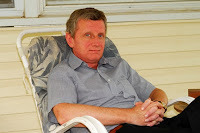
Philip Michael Bulman was born and raised in Philadelphia. He holds a master's degree in journalism from Northwestern University, and is the author of two books and many articles. Bulman currently lives in Maryland, U.S.A.

Published on April 29, 2012 05:00
April 27, 2012
Kitties Funnies: Every kitty needs a dog!
Everyone who knows me knows that I absolutely love kitties - every size, every breed, doesn't matter. They melt my heart. When I came across these pictures though, I think I'm becoming a dog person too. Here's your smile for today. Go give your pet a hug and kiss!
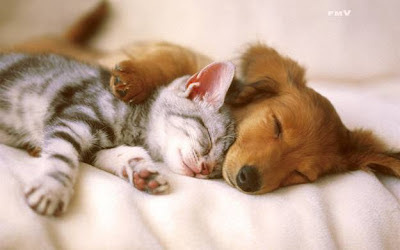
Best Friends
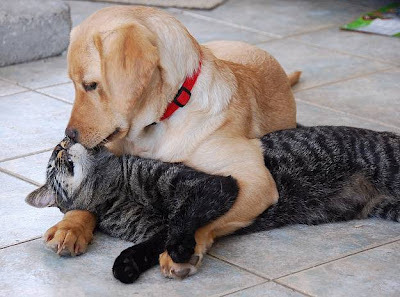
I heard you the first 5 times you told me!
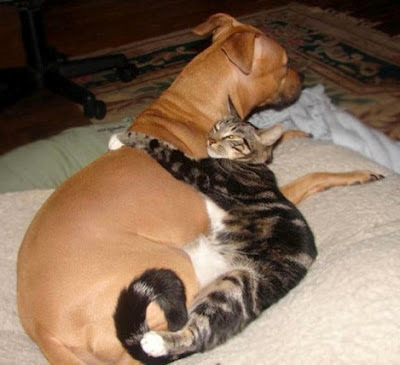
I love you, man!
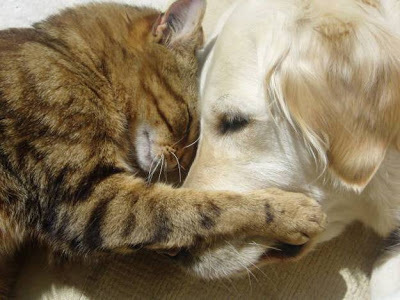
You're the best friend ever!

The gangs all here

My very own personal blanket!

Yeah, I know I'm cool. Calm down the hero worship, OK?



Best Friends

I heard you the first 5 times you told me!

I love you, man!

You're the best friend ever!

The gangs all here

My very own personal blanket!

Yeah, I know I'm cool. Calm down the hero worship, OK?

Published on April 27, 2012 05:00
April 26, 2012
Interview with Donna Burgess, 1 Year Later
How have things changed for you in the past year?
It's
been a great year for learning about not only publishing, but the craft
of writing. I went from constantly checking my inbox for responses from
agents to checking actual sales numbers!
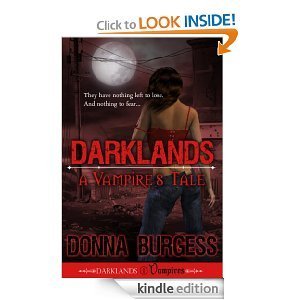
What kind of marketing did you do to get your book in front of readers?For Darklands: A Vampire's Tale , I
did a month-long blog tour. It was a lot of fun, although I'm terrible
at coming up with clever guest posts. I did giveaways on Goodreads and
post on Facebook and Twitter. The first Kindle Nation Daily sponsorship also brought a spike in sales. For my next book, Solstice (which
will be out May 1), I plan to do the same things. What's great about
having a year's experience behind me is knowing what marketing methods don't work, at least for me.
Do you have a publishing contract for your current book? Will you consider one?
I don't have a contract for Solstice . I enjoy being in complete control, but I would consider signing a contract, if the right deal came along.
Any foreign rights sold?
Nothing yet.
Do you have plans for any more books?
I just received the edits back for Solstice and am fast at work on a YA zombie novel (yeah, that hasn't
been done before). After the the zombie novel, I have southern ghost
novel. I hope both of those will be finished before the end of the year.
Any advice for newbie authors?
I'm really big on "indie" publishing, obviously. The main thing I would
stress to newbies is to hire an editor! A good editor is simply
invaluable. I use Lynn O'Dell and Red Adept and she has been worth every
penny. Also, a professional-looking cover is important. There are those
who are down on indie authors (check those inane threads on the Amazon
message boards), so it's our job to offer a product that is
indistinguishable from those of the major publishers. Finally, develop a
thick skin. Not everybody who reads your book is going to think its a
work of art, but that's okay. Just keep writing.


It's
been a great year for learning about not only publishing, but the craft
of writing. I went from constantly checking my inbox for responses from
agents to checking actual sales numbers!

What kind of marketing did you do to get your book in front of readers?For Darklands: A Vampire's Tale , I
did a month-long blog tour. It was a lot of fun, although I'm terrible
at coming up with clever guest posts. I did giveaways on Goodreads and
post on Facebook and Twitter. The first Kindle Nation Daily sponsorship also brought a spike in sales. For my next book, Solstice (which
will be out May 1), I plan to do the same things. What's great about
having a year's experience behind me is knowing what marketing methods don't work, at least for me.
Do you have a publishing contract for your current book? Will you consider one?
I don't have a contract for Solstice . I enjoy being in complete control, but I would consider signing a contract, if the right deal came along.
Any foreign rights sold?
Nothing yet.
Do you have plans for any more books?
I just received the edits back for Solstice and am fast at work on a YA zombie novel (yeah, that hasn't
been done before). After the the zombie novel, I have southern ghost
novel. I hope both of those will be finished before the end of the year.
Any advice for newbie authors?
I'm really big on "indie" publishing, obviously. The main thing I would
stress to newbies is to hire an editor! A good editor is simply
invaluable. I use Lynn O'Dell and Red Adept and she has been worth every
penny. Also, a professional-looking cover is important. There are those
who are down on indie authors (check those inane threads on the Amazon
message boards), so it's our job to offer a product that is
indistinguishable from those of the major publishers. Finally, develop a
thick skin. Not everybody who reads your book is going to think its a
work of art, but that's okay. Just keep writing.

Published on April 26, 2012 05:00



